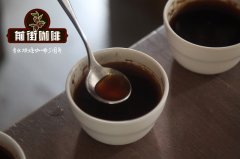Analysis on the color change of raw coffee beans during roasting one of the reasons for the formation of coffee bitterness

Professional coffee knowledge exchange more coffee bean information please follow the coffee workshop (Wechat official account cafe_style)
Everyone knows that the color of raw coffee beans is light green, dark green, dark green and yellowing on the surface. The color of raw coffee beans obtained by different processing methods is also different, but the color after baking is all brown. Why? This is a brown pigment made from oligosaccharides, amino acids, chlorogenic acid and other substances. Brown pigment does not refer to a simple color or substance, it is a general term for the various ingredients that make coffee beans different colors.
Raw beans constantly change color during baking, depending on the number of brown pigments and the size of molecules. Brown pigments can be classified according to the size of molecules, shallow baking will mostly produce small molecular pigments, with the deepening of baking, the total amount of pigments will increase, and the proportion of macromolecular pigments will also increase.
Most of the lightly roasted coffee beans contain small yellow pigments, which are produced by the reaction of oligosaccharide thermal decomposition with chlorogenic acid. Continue baking, oligosaccharides will be caramelized to produce caramel pigment, oligosaccharides react with amino acids to produce molasses pigment, which will produce a slightly larger reddish-brown pigment. The reaction produced by molasses pigment is called Mena reaction, which is a very important kind of food chemical reaction. The color of toast, miso and soy sauce are all the result of Mena's reaction.
If the baking continues, proteins and polysaccharides are also added to the reaction, turning into a huge dark brown pigment. This pigment is one of the elements that make up the bitterness of coffee.
Important Notice :
前街咖啡 FrontStreet Coffee has moved to new addredd:
FrontStreet Coffee Address: 315,Donghua East Road,GuangZhou
Tel:020 38364473
- Prev

Tell me about the same baking color, can you tell what the baking effect is?
Professional coffee knowledge exchange more coffee bean information please follow the coffee workshop (Wechat official account cafe_style) 1. The air in this seam has a different thermal conductivity from the beans outside. If it will cause the two temperatures to be different. Most of the problem is that the air inside is much hotter than beans. For example, the oven is too hot, or the beans are not thoroughly dry. You'll see the middle.
- Next

Flavor changes caused by caramelization during baking
Professional coffee knowledge exchange more coffee bean information Please pay attention to the coffee workshop (Wechat official account cafe_style) raw beans contain about 6% 9% of the bean weight, is the main raw material of coking sugar, sucrose is about 130 ℃-170 ℃, is pyrolyzed into low molecular weight monosaccharides, namely glucose and fructose, and releases aroma and carbon dioxide, but as the furnace temperature rises, to 180 ℃
Related
- Beginners will see the "Coffee pull flower" guide!
- What is the difference between ice blog purified milk and ordinary milk coffee?
- Why is the Philippines the largest producer of crops in Liberia?
- For coffee extraction, should the fine powder be retained?
- How does extracted espresso fill pressed powder? How much strength does it take to press the powder?
- How to make jasmine cold extract coffee? Is the jasmine + latte good?
- Will this little toy really make the coffee taste better? How does Lily Drip affect coffee extraction?
- Will the action of slapping the filter cup also affect coffee extraction?
- What's the difference between powder-to-water ratio and powder-to-liquid ratio?
- What is the Ethiopian local species? What does it have to do with Heirloom native species?

